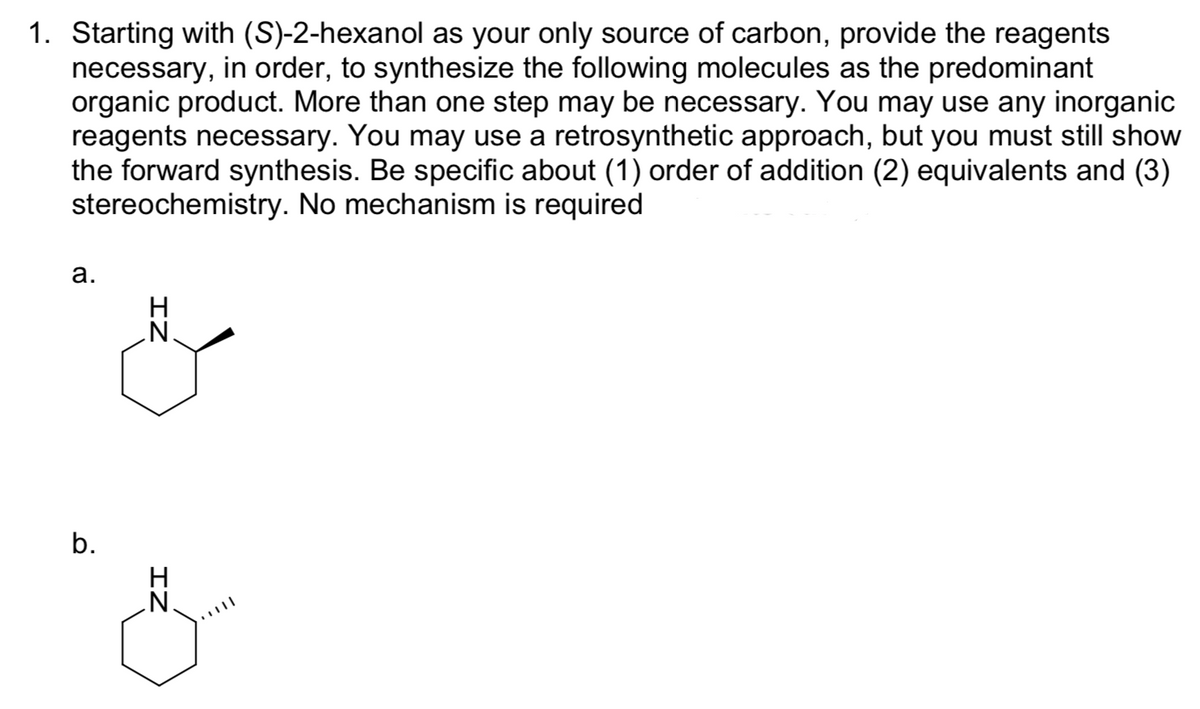1. Starting with (S)-2-hexanol as your only source of carbon, provide the reagents necessary, in order, to synthesize the following molecules as the predominant organic product. More than one step may be necessary. You may use any inorganic reagents necessary. You may use a retrosynthetic approach, but you must still show the forward synthesis. Be specific about (1) order of addition (2) equivalents and (3) stereochemistry. No mechanism is required a. .N. b. IZ IZ
Reactions of Ethers
Ethers (R-O-R’) are compounds formed by replacing hydrogen atoms of an alcohol (R-OH compound) or a phenol (C6H5OH) by an aryl/ acyl group (functional group after removing single hydrogen from an aromatic ring). In this section, reaction, preparation and behavior of ethers are discussed in the context of organic chemistry.
Epoxides
Epoxides are a special class of cyclic ethers which are an important functional group in organic chemistry and generate reactive centers due to their unusual high reactivity. Due to their high reactivity, epoxides are considered to be toxic and mutagenic.
Williamson Ether Synthesis
An organic reaction in which an organohalide and a deprotonated alcohol forms ether is known as Williamson ether synthesis. Alexander Williamson developed the Williamson ether synthesis in 1850. The formation of ether in this synthesis is an SN2 reaction.
**Do not use the answer from Chegg. It needs to be new** Starting with (S)-2-hexanol as your only source of carbon, provide the reagents necessary, in order, to synthesize the following molecules as the predominant organic product. More than one step may be necessary. You may use any inorganic reagents necessary. You may use a retro synthetic approach, but you must still show the forward then thesis. Be specific about (1) order of addition (2) equivalents and (3) stereochemistry.

Trending now
This is a popular solution!
Step by step
Solved in 2 steps with 2 images









